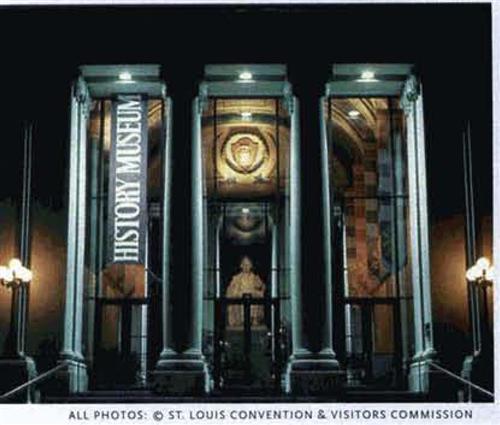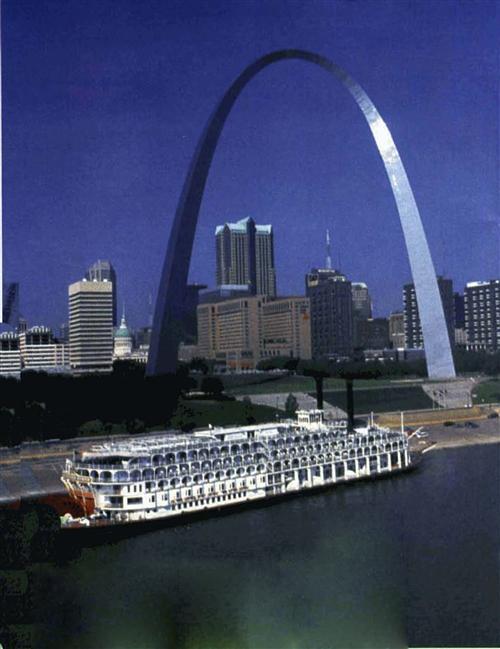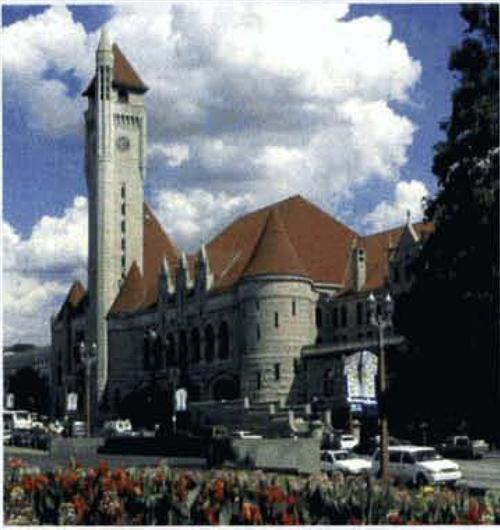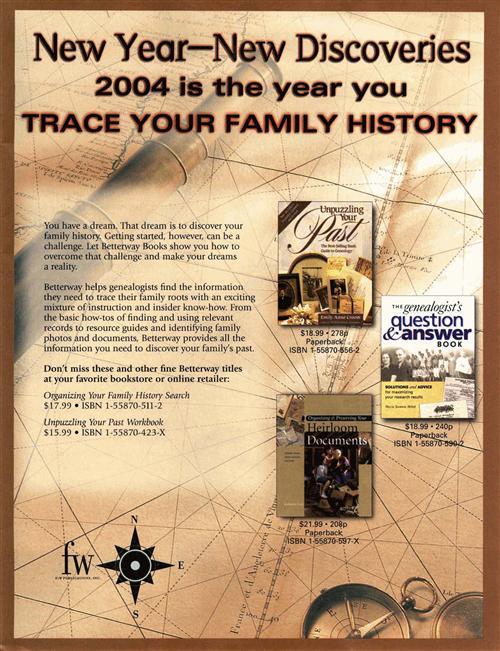Sign up for the Family Tree Newsletter Plus, you’ll receive our 10 Essential Genealogy Research Forms PDF as a special thank you!
Get Your Free Genealogy Forms
"*" indicates required fields
If your ancestors were lured west by the notion of abundant land and riverfront trade, chances are they settled in or near St. Louis, or at least passed through town. Known as the “Gateway to the West,” the city is rich in genealogical treasures — making it an ideal destination for NGS GENTECH 2004 <www.eshow2000.com/gentech>, scheduled for Jan. 22-24. This conference, organized by the National Genealogical Society’s (NGS) genealogy-technology division, promises to lure hundreds of genealogists to meet their ancestors in St. Louis. History buffs will be flocking here, too, as the city celebrates the bicentennial of the Lewis and Clark expedition.
If you’ll be among those genealogical and historical adventurers, don’t blaze a trail through the city on your own: With so many resources, deciding where to spend your conference downtime can be tough. So grab your city map, gather your research materials, and take this handy guide on your pilgrimage.
Begin by exploring the ample archives of the St Louis Mercantile Library in the Thomas Jefferson Library Building (8001 Natural Bridge Road, 314-516-7240, <www.umsl.edu/mercantile>), Located on the north campus of the University of Missouri-St. Louis, the library is the oldest west of the Mississippi River. Mercantile Library has one of the largest transportation collections in the region, with information such as passenger lists pertaining to waterways, railroads and airlines. Original clippings from early- 1900s issues of the St. Louis Globe-Democrat, as well as other historical newspapers on hard copy and microfilm, add genealogical appeal. Check Mercantile Library files to see if your ancestors were members. Membership isn’t a prerequisite for researching here, hut it does have its perks. Copies cost 30 cents for non-members, but only 15 cents for members. Members also may check out materials. When you visit the Mercantile Library, keep in mind that parking on campus can be tricky. If you plan to do extensive research, call the campus police department ahead of time (314-516-5155) to obtain a one-day parking permit. Or take public transportation: St. Louis’ light rail system, Metrolink <www.metrostlouis.org>, stops on campus.
Next, stop by the Missouri Historical Society Library and Research Center (225 S. Skinker Blvd., 314-7464599, <www.mohistory.org/content/iibraryandresearch/lrcgeneraltnfo.aspx>). Here, you’ll find extensive collections documenting the history of St. Louis, the state of Missouri, the Mississippi and Missouri river valleys, the Louisiana Purchase territory and the American West.
The Research Center is divided into six collections. You don’t need an appointment to use the general library and manuscript collections. Library collections include books, periodicals, newspapers, maps and microfilms on topics such as the American fur trade and the 1904 St. Louis World’s Fair (immortalized in the movie and musical Meet Me in St. Louis). Among the Manuscript Collections, you can find papers relating to Lewis and Clark’s 1804 to 1806 expedition, as well as records of free African-Americans in St. Louis and elsewhere in Missouri.
To access the society’s photograph and print collections, broadcast media archives, architecture collections or museum collections, call ahead to schedule an appointment. When you arrive, speak to one of the librarians or archivists for help accessing records. They also can assist you with photocopying, which costs 25 cents per page. The Library and Research Center is closed on Sundays and Mondays.
For more genealogical resources, visit the St. Louis County Library (1640 S. Lindbergh Blvd., 314-994-3300, <www.sld.lib.mo.us>). Tier 5 is home to the library’s special collections. Research tools include microfiche readers, two photocopiers, five computers and six microfilm readers with printers. Copy prices range from 10 cents to 25 cents. Leave behind your three-ring binders, purses, briefcases, bags and personal or library books — they’re prohibited in this facility.
While here, you can search Freedman’s Bank records on CD-ROM; World War I draft registration cards; city directories; and census, church and cemetery records. The St. Louis County Library’s special collections department also is home to the Julius K. Hunter & Friends African-American Research Collection, as well as the holdings of the St. Louis Genealogical Society (4 Sunnen Drive, Suite 140, 314-647-8547, <www.stlgs.org>). For an in-depth look at tracing your roots in St. Louis, consult the Guide to Genealogical Research in St. Louis, published by the society and available for sale on its Web site or at the county library.
Finally, dig in to one of the most comprehensive genealogy collections in St. Louis at the St. Louis Public Library downtown (1301 Olive St., 314-241-2288, <www.slpl.iib.mo.us>). Park at one of the many metered spaces, and don’t worry about what research materials you take into the library — there are no restrictions. The history and genealogy department is on the second floor of the library. It has microfilmed census records and Soundex for many states, plus city directories for St. Louis city from 1821 to 1980 and St. Louis County from 1893 to 1979.
One of the library’s most significant research resources is an electronic database called MapFind. The staff uses this program to access the library’s enormous map collection. Find the information you need from large-scale topographic maps of Missouri and Illinois, historical maps of St. Louis and medium-scale European maps. If you still can’t find what you’re looking for, ask the staff to retrieve one of the 100,000 maps from the basement.
Of course, while you’re here you’ll also want to visit the St. Louis Gateway Arch (877-982-1410, <www.stiouisarch.com>), located in the Jefferson National Expansion Memorial Park on the banks of the Mississippi. Designed by Eero Saarinen and dedicated in 1966, the stainless steel arch rises 630 feet high from a 60-foot foundation — making it the nation’s tallest memorial. An underground visitor center has galleries celebrating America’s westward expansion, including the exhibit Lewis & Clark: Imagining the Expedition from St, Louis. Trams take you to an observation room at the top of the Arch ($8 for adults, $5 for ages 13 to 16, $3 for ages 3 to 12).
No matter what else you do, you’ll need to eat. Try these centrally located restaurants:
- Tequila’s Mexican Restaurant (116 N. Sixth St., 314-621-1214)
- Lorenzo’s Trattoria on the Hill (1933 Edwards St., 314-773-2223)
- China Royal Restaurant (5911 N. Lindbergh Blvd., 314-731-1313)
NGS GENTECH 2004 takes place just blocks from the Gateway Arch, at the Millennium Hotel (200 S. Fourth St., 866-866-8086, <www2.mitlenniumhoteis.com>). For other lodging options, try:
- Drury Inn at Union Station (201 S. 20th St., 314-231-3900)
- Holiday Inn Select (811 N. Ninth St., 314-421-4000)
- Marriott Pavilion (1 S. Broadway, 314-421-1776)
- Travelodge (9645 Natural Bridge Road, 314-890-9000)
For more information, contact Explore St. Louis (see previous page) and check out St. Louis Attractions <www.st(ouisattractions. com>. For restaurant and entertainment guides, see <www.geocittes.com/HotSprings/2846/stlouis.html#CE>.
Double Dose of History
Most of the 1904 fair buildings were temporary, but you can still visit the Palace of Fine Arts, now the St. Louis Art Museum in Forest Park (1 Fine Arts Drive, 314-721-0072, <www.slam.org>). Admission is free. Nearby, catch Lewis & Clark: Great Journey West at the St. Louis Science Center’s OMNIMAX Theater (314-289-4444, <www.slsc.org>). Tickets cost $6 to $7.
The Jefferson Memorial Building, site of the Missouri History Museum (314-361-7395, <www.mohistory.org>), marks the fair’s main entrance. This museum is one of five in the nation to host Lewis & Clark: The National Bicentennial Exhibition <www.lewisandclarkexhibit.org>, featuring artifacts of the Corps of Discovery. The exhibit runs through September 2004; admission is $6 to $10.
See World’s Fair relics at the Scott Joplin House, home to the King of Ragtime from 1900101903. Joplin wrote “Cascades” for the fair and performed on The Pike. (314-340-5790, <www.mostateparks.com/scottjoplin.htm>). Tours are $2.50.
Visit the Explore St. Louis Web site <www.explorestlouis.com> or call (800) 916-8938 to learn more about events commemorating the Corps of Discovery and the Louisiana Purchase Exposition.
From the February 2004 Family Tree Magazine
ADVERTISEMENT






